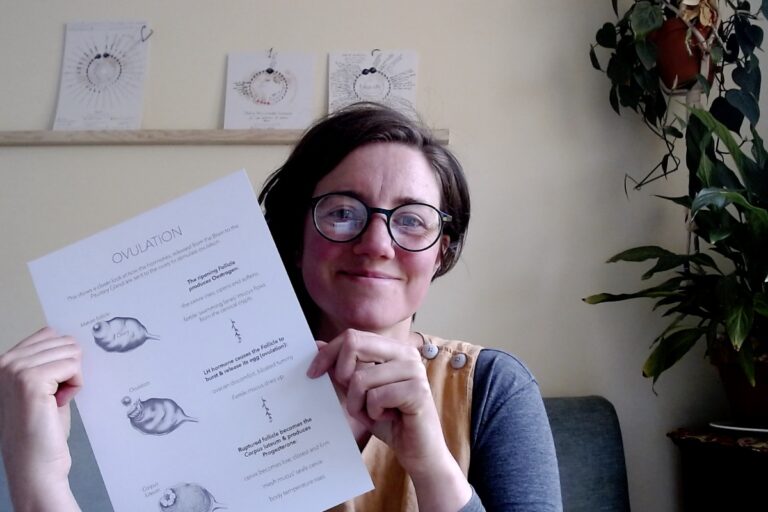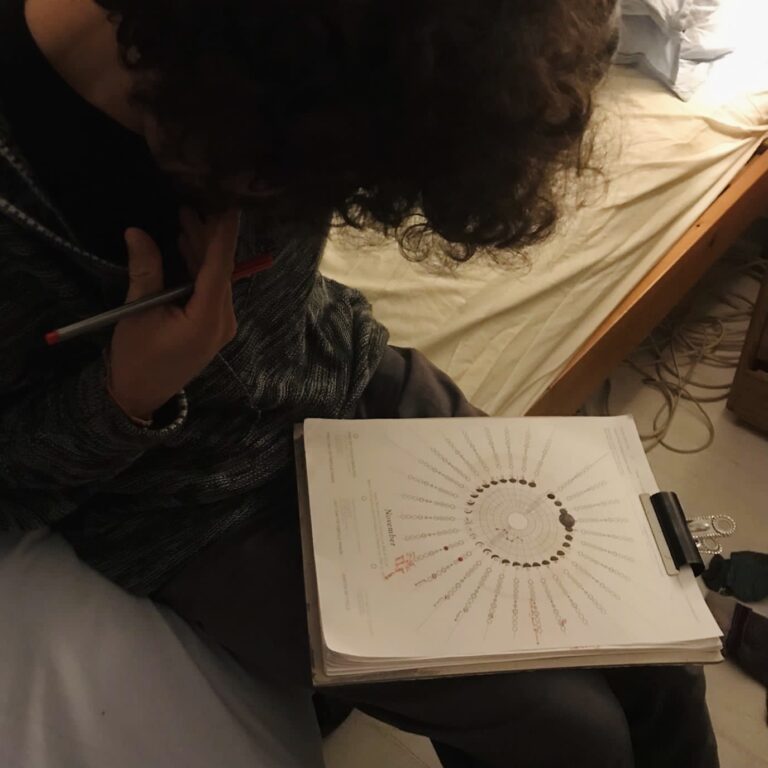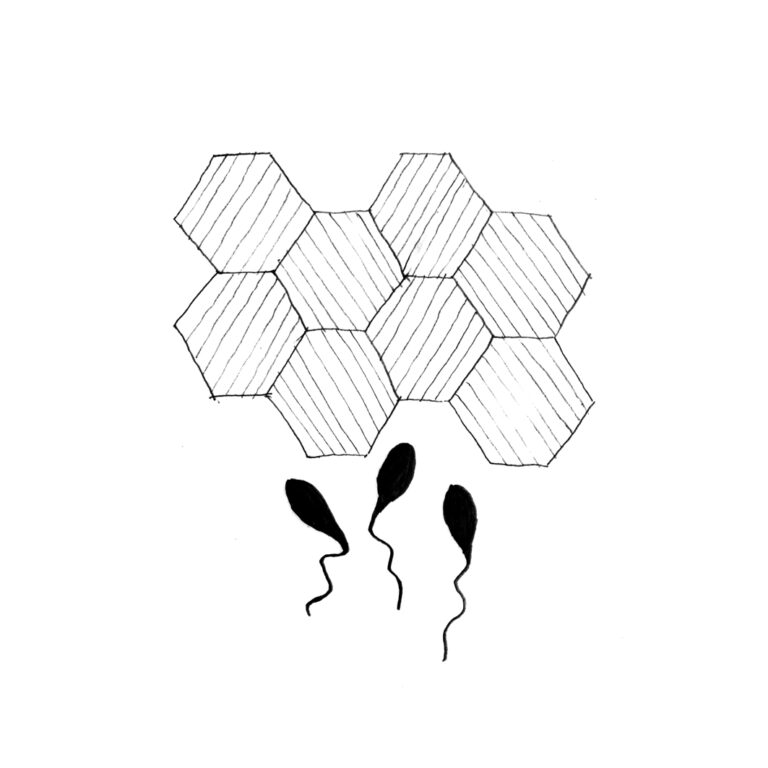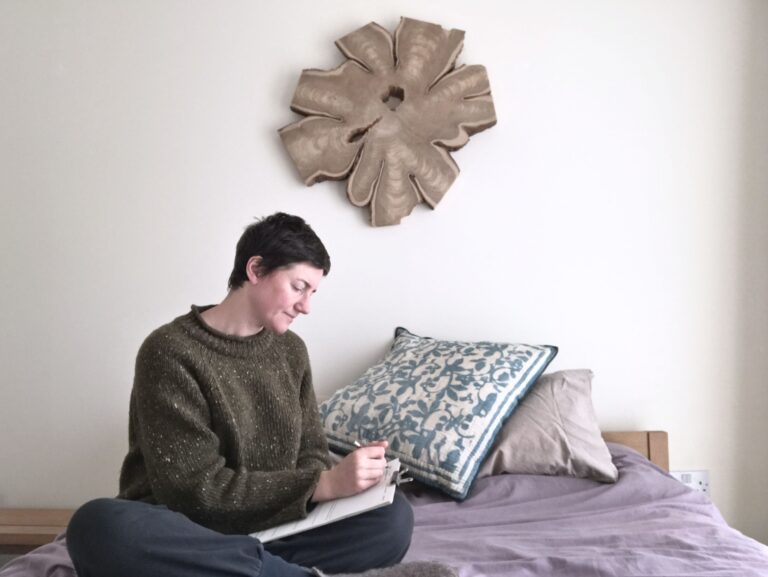What is Natural Family Planning (NFP) and how to get started?
Natural family planning (NFP) is a method of contraception where we monitor and record our different fertility signs throughout our menstrual cycle to work out when we are fertile or infertile. Each day this tells us if we are likely to get pregnant or not.
This page briefly explains how it works and what you would need to do, but this is not a substitute for instruction and training from a specialist NPF teacher.

9 key things to know about NFP
1 ~ There are no physical side effects
2 ~ You can use it both as a form of contraception or to plan when you get pregnant
3 ~ If followed consistently and correctly, it is 99% effective (which means that 1 to 9 women in 100 who use natural family planning will get pregnant in 1 year)
4 ~ It is less effective if the instructions are not carefully followed
5 ~ You have to keep a daily record of your fertility signs, including your temperature, the fluids coming from your cervix and the position of your cervix
6 ~ It takes 3 to 6 menstrual cycles to learn
7 ~ Illness, drinking alcohol, stress and travel make it more difficult because these things impact your fertility signs
8 ~ If you want to have sex during the time when you might get pregnant, you’ll need to use a barrier method of contraception, such as a condom, diaphragm or cap
9 ~ By using condoms as well as NFP, you’ll help to protect yourself against sexually transmitted infections

What does NFP involve?
Natural family planning involves identifying the signs and symptoms of fertility during your menstrual cycle so you can plan or avoid pregnancy. If you’re interested in learning Natural Family Planning, make sure you are taught and supported by a qualified fertility awareness teacher.
There are 4 different fertility signs you observe, monitor and record for natural family planning. These are:
~ the length of your menstrual cycle (the calendar rule)
~ daily readings of your body temperature (the temperature method)
~ changes to your cervical mucus (the mucus method)
~ changes in your cervix (the cervix method)
These 4 signs along with other fertility signs unique to you such as your mood and breast tenderness get observed and recorded alongside each other to give you an accurate, double checked picture of when you are fertile and infertile.
Each day, you record and track your observations and measurements on a chart throughout each menstrual cycle.
You can download my free fertility cycle chart here. To learn everything you need to know to get started with NFP and receive 1:1 support from me, you can join my charting your fertility cycle online course here.

Your menstrual cycle and ovulation
Your menstrual cycle lasts from the first day of your period until the day before your next period starts. This is 28 days on average but longer or shorter cycles, from 21 to 40 days, are normal and healthy.
During your cycle, an egg is released from one of your ovaries (ovulation) and travels down the fallopian tube. It is usually released 10-16 days before your next period. The egg only lives for a maximum of 24 hours after ovulation, and a sperm must meet the egg within that period for pregnancy to happen.
You can get pregnant up to 3 days after you ovulate. But if you’ve had sex in the 6 days before ovulation, it’s possible to get pregnant because sperm can live inside a woman’s body for up to 6 days and fertilise the egg when it’s released.
By tracking your cycle, you can calculate when you’re most likely to be fertile (able to conceive). But you need to allow for uncertainty over exactly when you ovulate. The length of a menstrual cycle can vary over time, so to make sure your calculations are as precise as possible, measure your menstrual cycle over the course of 12 months.


The temperature method
The temperature method is used because there’s a small rise in body temperature after ovulation.
You’ll need to use either a digital thermometer or a thermometer specifically designed for NFP. The temperature method involves taking your temperature every morning before you get out of bed. This should be done before eating, drinking and smoking, and ideally the same or similar time every morning.
Look out for 3 days in a row when your temperature is higher than all of the previous 6 days. The increase in temperature is very small, usually around 0.2C (0.4F). You are no longer fertile 3/4 days after your temperature rise.

The mucus method
There’s a change in the amount and texture of your cervical mucus during different times in your menstrual cycle.
You can check this by observing sensations and changes at the vulva and inside the vagina. For the first few days after your period, you’ll probably find your vagina is dry and you cannot feel any mucus.
As your hormone levels rise to prepare your body for ovulation, you’ll probably find that you start to produce mucus that is moist, sticky, white and creamy. This is the start of the fertile period of your menstrual cycle.
Immediately before ovulation the mucus will get wetter, clearer and slippery – a bit like raw egg white. This is when you’re at your most fertile. The mucus should then soon return to being thicker and sticky, and after 3 days you are no longer fertile.


How effective is NFP?
If the rules and guidelines are followed carefully, this method of contraception is 99% effective. This means that 1 to 9 women in 100 who use NFP correctly will get pregnant while using it.
But if NFP methods are not quite followed correctly, more women will get pregnant. It takes commitment and practice to use NFP effectively.
No method of contraception is 100% reliable – not even sterilisation!


Who can use NFP?
Anyone experiencing a menstrual cycle can practice and use Natural Family Planning.
However, there are certain situations that can affect fertility signs so much that it makes it difficult. NFP might not be a good fit for you if:
~ you have a short or long-term condition affecting your fertility signs, such as a sexually transmitted infection (STI), thrush or a pelvic inflammatory disease
~ you’re taking a medication that disrupts production of cervical mucus (ask me, your GP or a pharmacist if you’re not sure. I provide a list of contraindicated medications on my online course)
~ you very regularly travel through different time zones
~ you’re not able to take your temperature in the recommended way each morning
~ you’re a heavy or very regular drinker (alcohol affects your body temperature)


8 advantages of NFP
~ It does not cause any side effects
~ It is acceptable to all faiths and cultures
~ Most women can use it, as long as they’re properly trained by a teacher
~ Once you’ve learned the techniques, there should be no further need for input from health professionals
~ It can be used either to avoid pregnancy or to become pregnant
~ It does not involve chemicals or physical products
~ It can help you recognise normal and abnormal vaginal secretions, so you can be aware of possible infection or disease
~ It involves your partner in the process, which can help increase feelings of closeness, intimacy and trust

8 disadvantages of NFP
~ It does not protect against STIs such as chlamydia or HIV
~ You’ll need to avoid sex, or use contraception such as condoms, during your fertile time, which some couples can find difficult
~ If you decide to abstain, there can be 8-16 days during which you cannot have sex, depending on your cycle length
~ It is much less effective than other methods of contraception when the rules are not followed accurately
~ It will not work without continued commitment and practice
~ It can take several menstrual cycles before you become confident in identifying your fertile time and during this time, you’ll have to use barrier contraception, such as condoms
~ You’ll need to keep a daily records of your fertility signs
~ Stress, illness, travel, lifestyle and hormonal treatments can disrupt your fertility signs

What you’ll need to get started with NFP
~ A digital or mercury thermometer
~ A printed blank chart for each menstrual cycle and a pen
~ If you plan to use NFP as a form of contraception, you’ll need support from a certified NFP teacher.
~ If you plan to use NFP as a form of contraception, you’ll need to use a barrier method of contraception like condoms for the first few months until you are confident

It is important for us to do what feels right for our body and our individual needs.
Remember that it’s always ok to ask to help and it’s always ok to ask for more information before making a decision about what is best for you.
Take your time to explore the contraceptive options that are available for you with your partner(s) and your medical provider if appropriate. You can reach out to talk to me about this too.
This process will support you to feel empowered on your fertility journey and give you the information and solutions that are best for your individual needs.